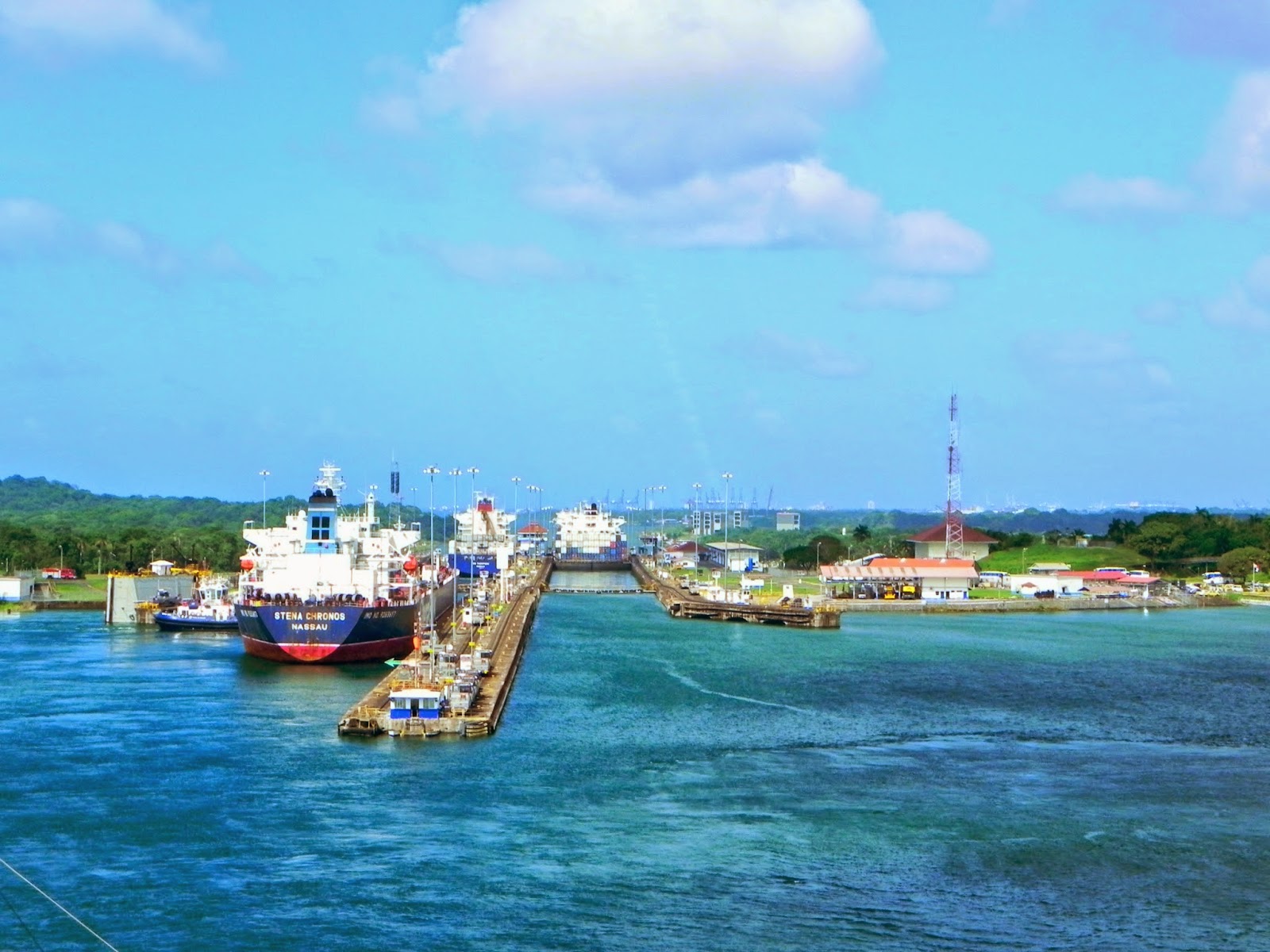The Panama
Canal is likely the coolest cruising lane a ship might ever pass through: a
48-mile (77.1 kilometers) aquatic highway linking the Atlantic Ocean (via the
Caribbean Sea) and the Pacific Ocean, snaking through intricate locks and
shimmering lakes and surrounded by an environmental wonderland. The canal cuts
across the Isthmus of Panama and is a key conduit for international maritime
trade. There are locks at each end to lift ships up to Gatun Lake, an
artificial lake created to reduce the amount of excavation work required for
the canal, 26 metres (85 ft) above sea level. The current locks are 33.5 metres
(110 ft) wide. A third, wider lane of locks is currently under construction and
is due to open in 2016.
The
Americans may have built the canal, but the concept, at least public stated,
can be traced to the early 16th Century, when King Charles of Spain
commissioned a survey for a shortcut through isthmus of Panama to speed ship
traffic to and from Peru. While the Spanish shelved that plan, the relatively
slim strip of land and its rich location between the Atlantic and Pacific
worlds proved too strong a lure for a string of Europeans in their quest for
quicker, safer trade routes.
France began
work on the canal in 1881, but had to stop because of engineering problems and
high mortality due to disease. The United States took over the project in 1904,
and took a decade to complete the canal, which was officially opened on August
15, 1914. One of the largest and most difficult engineering projects ever
undertaken, the Panama Canal shortcut greatly reduced the time for ships to
travel between the Atlantic and Pacific Oceans, enabling them to avoid the
lengthy, hazardous Cape Horn route around the southernmost tip of South America
via the Drake Passage or Strait of Magellan.
During
construction, ownership of the territory that is now the Panama Canal was first
Colombian, then French, and then American. The US continued to control the
canal and surrounding Panama Canal Zone until the 1977. After a period of joint
American–Panamanian control, the canal was taken over by the Panamanian
government in 1999, and is now managed and operated by the Panama Canal
Authority, a Panamanian government agency.



























No comments:
Post a Comment